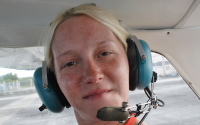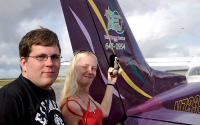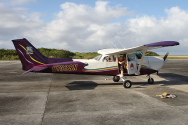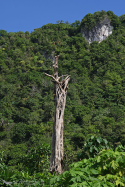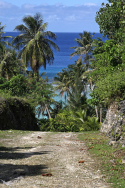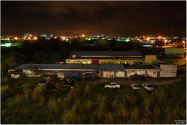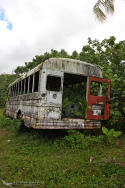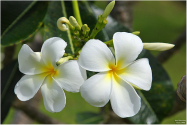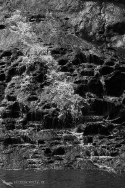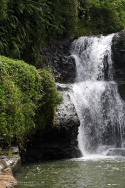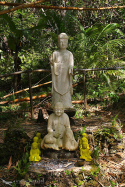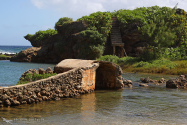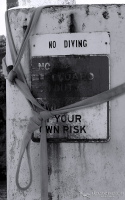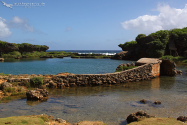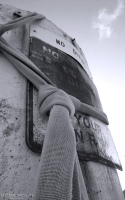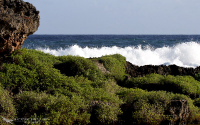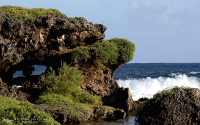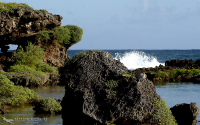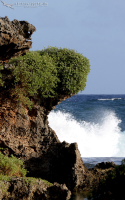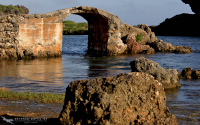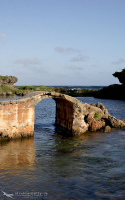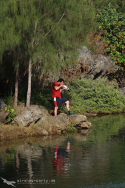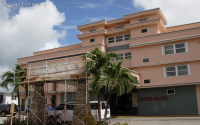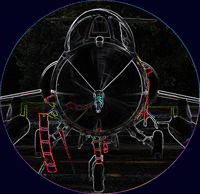
| Team |
| Events 2009 |
| Events 2008 |
| Events 2007 Events 2006Events 2005 |
| Videos |
| Publications |
| Gästebuch |
| Links |
| InternImpressum |
Guam, USA; 13. – 21. Dezember 2008
Hafa Adai
„Was treibt euch nach Guam?“, diese Frage begleitete unseren gesamten Aufenthalt. Die Tatsache, dass europäische Touristen nicht gerade in Horden über das paradiesische Eiland im Pazifik herfallen, lässt die Neugier der Guamaner nicht ganz unberechtigt erscheinen.
Dabei ist die Antwort gleichfalls simpel, wie logisch: Zum einen Nicoles Affinität zum B-2 Spirit, welcher gelegentlich auf der Andersen AFB gesichtet worden sein soll, zum anderen das heftige Verlangen des gestressten Teams nach Meer, Strand und bunten Fischen.
Das schmucke Inselchen liegt 2.500 km südlich von Tokio, am unteren Ende des Marianen Archipels und damit mitten in den Weiten des Pazifiks. Es ist ein nichtinkorporiertes Territorium der USA, damit ist die Amtssprache Englisch und es ergeben sich alle Vor – (Denny‘s) und Nachteile (Budweiser) wie auf dem US-Mainland.
Einen gewissen Bekanntheitsgrad erlangte das Eiland durch die Andersen Air Force Base. Rund ein Drittel der Insel wird von Einrichtungen des amerikanischen Militärs eingenommen, 25% der knapp 170.000 Einwohner sind Soldaten und deren Angehörige.
Über 80% (fast 1 Mio.) der Touristen hingegen kommen aus Japan, aber mitnichten wegen des tollen Klimas, sie stürzen sich auf die, in zahlreichen Malls, steuerfrei feilgebotenen Waren von Louis Vuitton, Chanel und Co.
Wir waren jedoch aus anderen Gründen gekommen. Bot die Geographie uns doch wunderbare Strände an, und es wäre äußerst unhöflich gewesen, sie abzulehnen. Dank des ausgeprägten Konsumverständnisses der (Mit-) Touristen hatten wir die schönsten Ecken sogar fast für uns alleine.
Nur ein paar Meter hinter dem letzten Hotel, nur getrennt durch einen kurzen Marsch durch die „Spinnenhölle“, hinter einem vorstehenden Felsen liegt FaiFai Beach. Wir wissen nicht, wo man auf der Welt dem Paradies noch so nahe kommen kann. Palmen bis ans Wasser, feinster Sand und eine seichte Brandung bildeten die Kulisse eines unvergesslichen Tages.
Gelegenheit zum Baden findet sich auf der Westseite Guams fast überall, das Wasser im Tumon Bay schimmert bunt, die Unterwasserwelt ist faszinierend, trotz ihrer Nähe zu den großen Hotels waren die Strände ruhig und wenig besucht.
Lohnend ist ein Ausflug zum Ritidian Beach mit seiner rauen Brandung im Norden. Schon die Anreise durch die tropischen Wälder, auf Strassen bei denen das Wort Schlagloch eine völlig neue Bedeutung erhält, ist eine Attraktion für sich.
Dem Zufall war es zu verdanken, dass wir den Inajaran Natural Pool im Südosten entdeckten. Das Bassin liegt unscheinbar direkt an einer Strasse. In dem ruhigen, warmen Wasser wimmelt es vor bunten Fischen und die zahlreichen Touristenbusse sind nach ein paar Fotos schnell wieder verschwunden.
Gefreut hatten wir uns im Vorfeld auch auf die Talofofo Falls im Binnenland. Versprachen die Wasserfälle doch einige vergnügliche Stunden im kühlen Nass mitten im Dschungel.
Die Realität jedoch war ernüchternd. Statt eines natürlichen Schwimmbades glich die Anlage in weiten Teilen eines heruntergekommenen Freizeitparks mit Tendenz zum Schrottplatz. Eine ganz üble Touristenfalle für 20$ Eintritt!
Schöner, und vor allem kostenlos, ist ein Besuch des Flohmarktes in Chamorro Village. Einheimische und Touristen laben sich an köstlichen Speisen, es gibt Live-Musik und geschmackvolle Souvenirs.
Und sonst? Alles typisch Amerika. Filialen der bekanntesten Fastfoodketten (Vorsicht vor Dominos-Pizza, Vergiftungsgefahr) an jeder Ecke, die Shopping Malls locken mit günstigen Preisen und der Sprit ist billig.
Guam hat wunderschöne, ruhige Strände, die Menschen sind freundlich und aufgeschlossen. Manche Ecken jedoch wirken etwas lieblos, Sonnenschirme sind kaputt und man läuft Gefahr am Strand in eine Glasscherbe zu treten. Man merkt, dass die meisten Touristen wegen des steuerfreien Einkaufs hierher kommen.
Unsere Rückreise nach Deutschland währte über 30 Stunden, Guam ist sehr weit weg. Obwohl wir wunderbare Tage hatten, wissen wir nicht, ob wir jemals auf die kleine Insel Mitten im Pazifik zurückkehren werden. Sag niemals nie...
English:
“Why do you visit Guam?” this question accompanied our whole stay. The fact that Europeans don’t ‘attack’ this paradisiacal island in the Pacific Ocean in swarms, the Guamanian’s curiosity is justifiable. Though the answer is as much simple as logical: On the one hand Nicole’s addiction to the B-2 Spirit, which have been sighted occasional and on the Anderson AFB and on the other hand the heavy desire of the stressed team for sea, beach and colored fish.
The pretty island is 2,500 km (1,553.43 miles) south of Tokyo at the bottom of the Mariana archipelago and thus located in the middle of the Pacific. It is an unincorporated territory of the USA, so English is the official language and offers all advantages (Denny’s) and disadvantages (Budweiser) like on the US mainland.
The island attained a certain high profile through the Andersen Air Force Base. Almost a third of the island is occupied by facilities of the US military, 25% of roughly 170,000 inhabitants are soldiers and their families.
More than 80% (nearly 1 million) of all tourists are from Japan but certainly not owing to the climate, they jump at the one of the numerous malls where duty-free goods like Louis Vuitton, Chanel and Co. are offered.
But we came for other reasons. The geography offered us wonderful beaches und it would have been very rude to deny. Due to the distinctive consumer behavior of our (co-) tourists we had most beautiful places almost for our own.
Just a few steps beyond the last hotel, only separated by a short walk through “spiders’ hell”, behind a rock spur is FaiFai Beach. We don’t know where in this world you can come so close to the paradise. Palm trees protrude to the water, finest sand and shallow surf formed the scenery of an unforgettable day.
Opportunities to swim is found almost everywhere on the west side of Guam, the water in Tumon Bay shines gaudy, the underwater world is fascinating; in spite of the closeness to the big hotels the beaches were quiet and visited a little.
An excursion to Ritidian Beach with its rough surf fin the north of the island is worthwhile. Already the journey through tropical woods on roads where the word “road hole” gets an absolutely new meaning is an attraction for itself.
It was mere chance that we discovered the Inajaran Natural Pools in the south-east. The pond is inconspicuous directly next to the street. The quiet warm water is alive with colored fish and the numerous tourist buses get through with taking pictures quickly.
Also we were looking forward to see the Talofofo Falls in heartland. The waterfalls promised some amusing hours in the chilly water amidst the jungle.
Nevertheless, the reality was disillusioning. Instead of a natural swimming pool the facility was in wide parts like a shabby amusement park with upwards trends to a wrecking yard. An evil tourist catch with an entrance fee of $20!
More beautiful and free of charge is to visit Chamorro Village’s flea market. Locals and tourists refresh themselves with delightful dishes, there it is live music and you can get elegant souvenirs.
Anything else? Yes! Everything is all-American! Branches of all best known fast food chain (beware of Domino’s Pizza, risk of poisoning) are on every street corner, the shopping malls woo you with low prices and gas is cheap!
Guam has wonderful quiet beaches; the people are friendly and open-minded. Some corners look a bit unkind and you run the risk to be hurt by a broken piece of glass on the beach. You realize that most tourists are on the island for duty-free shopping.
Our trip back home to Germany lasted more than 30 hours, Guam is very far away. Although we had wonderful days on this Pacific island we don’t know if we come back one day.
Never say never…
Fai Fai Beach
Flying over Guam
Arond the Island...
Talofofo Falls
Pool....
Ramada
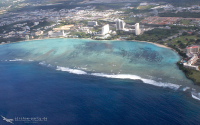

.jpg)
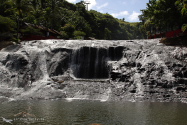

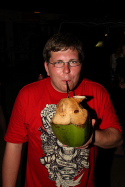
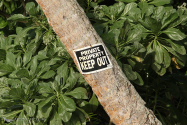
.jpg)


.jpg)



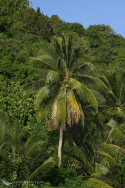


.jpg)
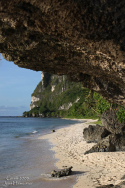
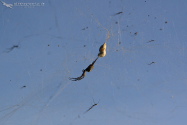

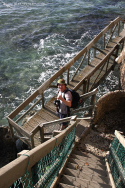




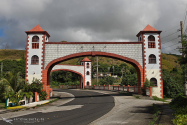
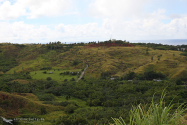





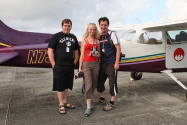
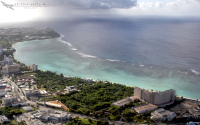
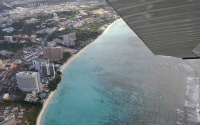
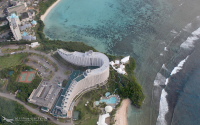
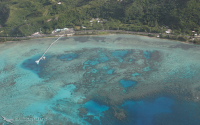
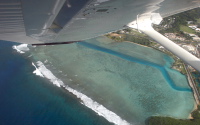
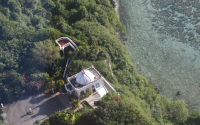
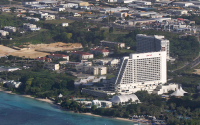
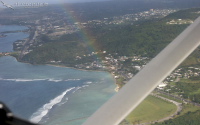
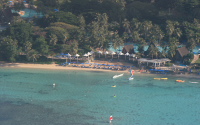
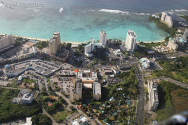
.jpg)

